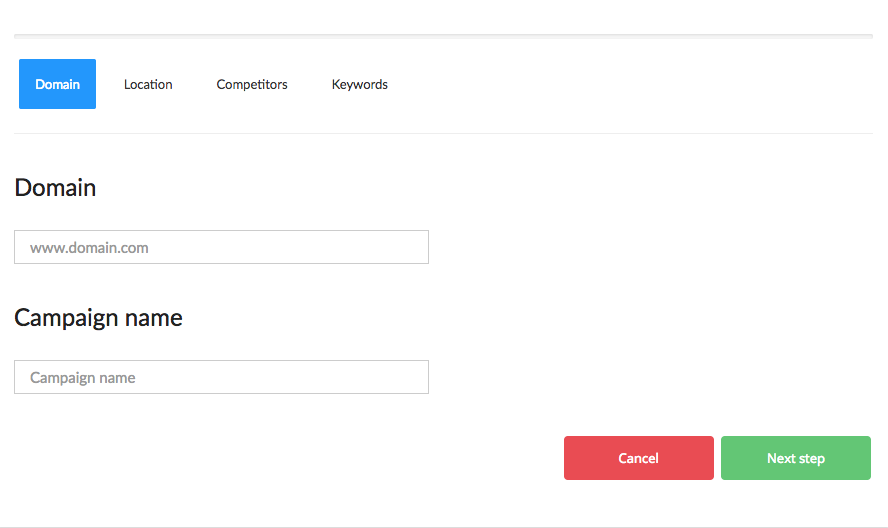3 stages for successful rank tracking
The Rank Tracking tool helps you monitor the fluctuation of your positions in the search engine’s results pages, otherwise known as the SERP “Search Engine Result Page“. Keep an eye on your position and that of your competitors for your chosen keywords, with all the configurations offered by Google.
- Create a rank tracking.
To use this tool at its full use making sure the configuration is correctly set-up is crucial for rank tracking.
Creating a rank tracking requires 5 pieces of information:
- the domain that you want to follow, in this step it means the URL of your website.
- the name that you want to give to this campaign so it can be easily found later.
- the browser configuration; select a country and a language using the drop-down menus. For local searches, tick the box “LOCAL“ and specify the town.
- the competitor’s sites that you want to watch.
- the keywords that you’re trying to position yourself on.
2. Refer to the reports.
Once the tracking has been created, we see the following table:
Where we see all the existing rank tracking campaigns, each tracking also has a little summary of important information: the average position of tracked keywords on that day, the average position over 7 days, evolution over 7 days, number of keywords that gained or lost a position as well as a reminder of the browser configuration.
It’s also possible to delete a rank tracking campaign from this table with the pictogram of a Trash Bin.
3. Explore the content.
Here’s how to read the graphs and understand the information in the table of a rank tracking report.
The first graph:
In this section you can easily visualize the evolution over time of your average position as well as that of your competitor’s. You can also see the key moments of success and failure of your keyword strategy.
Data table:
In this section you have a list of the tracked keywords with their position as of today, your site and your competitors sites. You will also find 6 columns for each keyword with supplementary information:
- Position over 24 hours and the evolution of the position compared to the day before.
- Position over 7 days and the evolution of the position compared to the previous week.
- A personnalisable column displaying the position and evolution for a date span, changeable to 30 days / 3 months / 6 months or 1 year.
It is possible to filter any column by clicking on the chosen column title.
By clicking on Details you will get an overview of the SERP that day in the first tab and a history of all the positions of a specific keyword and those of your competitor’s in the second tab. The history has no limits and you can look back to as far as the day the campaign was created.
The second graph on the bottom-left of the interface :
This graph is an overview of the position fluctuations, green is the number of keywords that have gained a position, red is the number of keywords that have lost a position.
With this graph you can get a quick glance of the evolution of your keywords in the SERP.
The third graph on the bottom-right of the interface:
It shows the distribution of keywords by position groups in the search results pages.
For example in the image above for the site amazon.fr:
58 tracked keywords are found in 1 et 5 position.
10 keywords are in 6 et 10 position.
6 keywords are in 11 et 20 position.
3 keywords are in 21 et 100 position.
No keywords are in +100 position.
It gives you a glance of your keyword performance in the search results.
Here is all the necessary information for optimal use of the Rank Tracking tool. If you have any further questions don’t hesitate to get in contact with our team via the chatbox or email, and we’ll be happy to help!






Gaelle
Comments